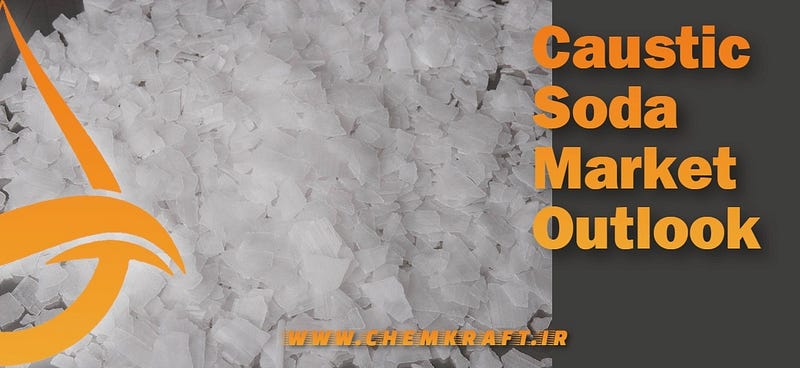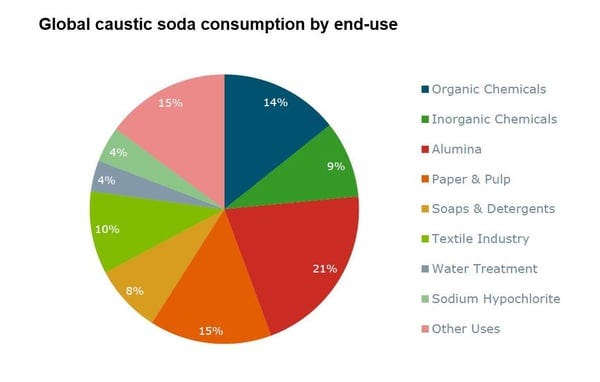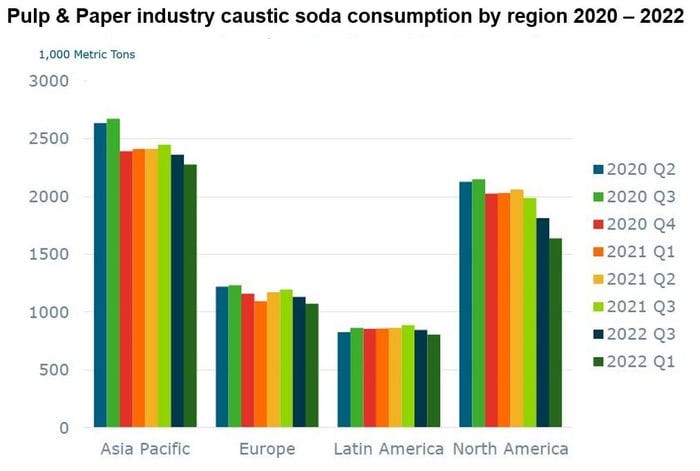CAUSTIC SODA DEMAND AND IRAN’S ROLE: OPPORTUNITIES AND CHALLENGES

Introduction:
Possible caustic soda shortage in late 2020 decade: The global caustic soda market is at risk of facing a demand-supply imbalance in the latter half of this decade, as indicated by trends analyzed by Hira Saeed, a chlor-alkali market expert at Tecnon OrbiChem. The potential for a shortfall hinges on the severity of the anticipated global economic downturn outlined by the International Monetary Fund.
In 2022, challenges within the chlor-alkali sector are underscored by the elevated prices of caustic soda in Europe, driven by increases in natural gas and electricity costs. High export prices out of Europe in Q2 led to a scarcity of concluded deals, but recent adjustments by European exporters, reducing prices for competitiveness, have begun to improve the situation. However, persistent high freight costs and delays pose ongoing obstacles to successful export strategies.

The graph illustrating caustic soda capacity and forecasted consumption reveals a potential imbalance between 2024 and 2025 if no new plants are introduced, emphasizing the need for strategic interventions.

In the US, caustic soda demand experienced a 5% drop in 2020, with downstream sectors, except for detergents, water treatment, and bleach industries, significantly affected by the pandemic. The packaging sector, boosted by increased online purchases, stood out as a resilient segment.
Main consumers
The chemical sector emerges as a major global consumer of caustic soda, with alumina traditionally constituting 21% of consumption. However, the alumina sector faces challenges in recovering from the pandemic and supply chain issues, including the semiconductor chip shortage. As the chip shortage begins to ease, a deteriorating global economy may limit the potential rebound of the automotive industry.
Opportunities and Challenges for Iran:
- Aluminium Sector Opportunities: Iran, strategically positioned, can explore opportunities in the aluminium sector, especially in North America and West Europe. Given the relatively small size of these regions’ alumina sectors compared to global consumption rates, Iran could play a significant role in meeting the demand for caustic soda.
- Strategic Investments in Alternative Production: With the potential imbalance in global caustic soda supply, Iran has the opportunity to make strategic investments in alternative production methods, ensuring a stable supply and contributing to global sustainability goals.
- Navigating Economic Volatility: Iran would need to navigate challenges associated with a volatile economic landscape. Strategic planning and risk management will be crucial to capitalize on opportunities and mitigate potential disruptions.
- Leveraging Energy Resources: Given the impact of high electricity costs on caustic soda production in Europe, Iran, endowed with substantial energy resources, can leverage cost-effective production methods, attracting investments and collaborations in the sector.
- Global Trade Dynamics: Iran can strategically position itself in the evolving global trade dynamics, especially in light of disruptions caused by geopolitical events. By addressing operational constraints and enhancing import-export capabilities, Iran can play a pivotal role in the caustic soda market.

Iran’s opportunity
As the industry grapples with challenges, including high electricity costs impacting production, Iran’s proactive approach to investment and innovation could position it as a key player in addressing the potential caustic soda shortage. However, uncertainties in global economic conditions and the willingness of companies to invest in expansions during volatile times pose challenges that Iran must navigate adeptly. The next few months may present opportunities for Iran to contribute to a balanced caustic soda supply, but careful strategic planning will be essential to ensure success in this dynamic environment.
Hossein Moshiri
WA +989124311007
Source: www.chemkraft.ir/en
Comments
Post a Comment